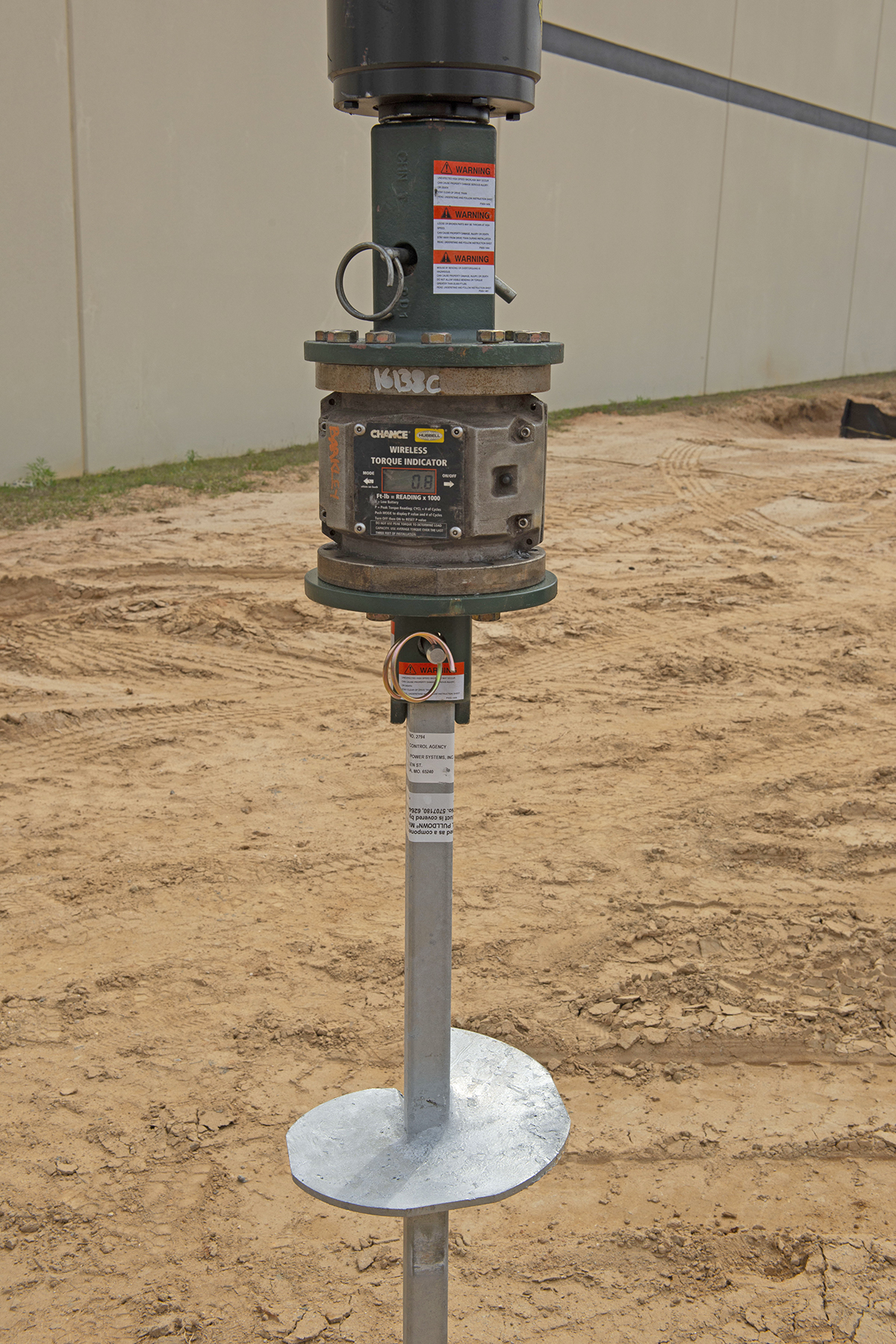 Capacity-to-torque relationships for helical piles are used frequently to determine termination criteria for helical piles. Empirical relationships between installation torque and capacity have been established for several helical pile shaft sizes, including square shaft and pipe shaft piles.
Capacity-to-torque relationships for helical piles are used frequently to determine termination criteria for helical piles. Empirical relationships between installation torque and capacity have been established for several helical pile shaft sizes, including square shaft and pipe shaft piles.
The empirical capacity-to-torque relationship can be expressed as:
Qt=KtT where, Qt = ultimate capacity of helical pile
Kt = capacity-to-torque correlation factor
T = average installation torque (taken at 1-ft increments over the final 3 ft of installation)
It is important to understand torque correlation works well when properly applied. Best practice is to use an average installation torque for “T” in the equation above. The average torque is often more explicitly referred to as the “effective” torque, since it considers soil conditions in stratum that will bear load when the helical pile is in service. The effective torque is typically an average over a length range prior to tip depth as noted in the definition for “T” in the equation above. “Instantaneous” torque is defined as the torque at the point the helical pile reaches termination depth.
When installing single-helix piles that will be loaded in tension, and all multi-helix piles (loaded in tension or compression), Hubbell Power Systems, Inc. recommends that effective torque be used. For single-helix piles loaded in compression only, the final (instantaneous) torque can be used.
HeliCAP® v3.0 Helical Capacity Design Software calculates both the instantaneous and effective torque based on the bearing capacity of the helical pile. The user can then decide which one to use for their specific project.

 Capacity-to-torque relationships for helical piles are used frequently to determine termination criteria for helical piles. Empirical relationships between installation torque and capacity have been established for several helical pile shaft sizes, including square shaft and pipe shaft piles.
Capacity-to-torque relationships for helical piles are used frequently to determine termination criteria for helical piles. Empirical relationships between installation torque and capacity have been established for several helical pile shaft sizes, including square shaft and pipe shaft piles.

